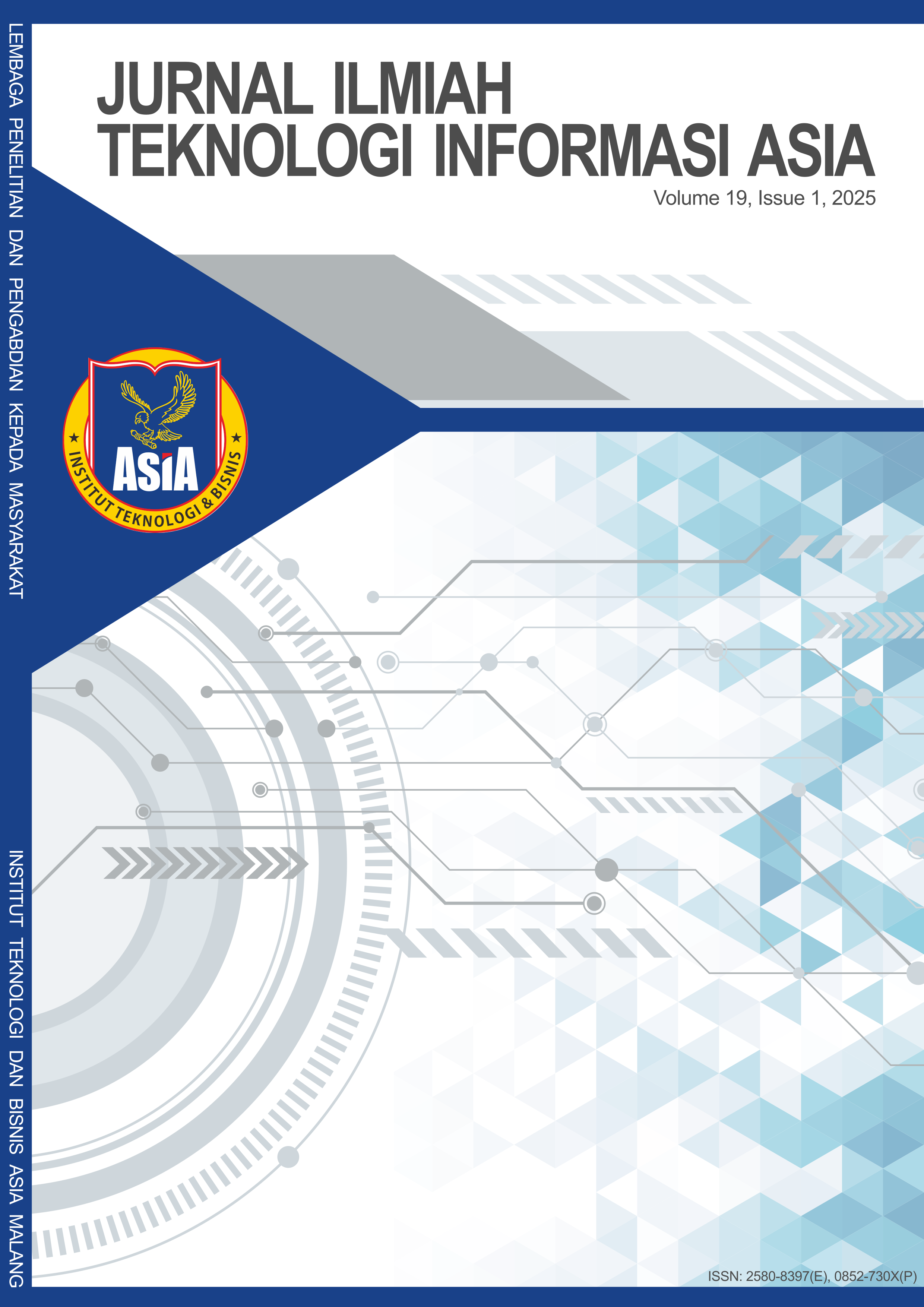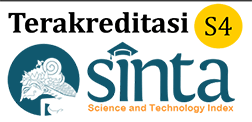Gym location search in Malang using simple additive weighting method: case study at Asia Malang Institute
DOI:
https://doi.org/10.32815/jitika.v19i1.1114Keywords:
gym, recommendation system, simple additive weighting (saw)Abstract
The main problem in this research is the large selection of gyms in Malang Raya with various different criteria, which makes the process of selecting the right gym difficult for prospective users. This research aims to develop the best gym location recommendation system in Malang Raya using the Simple Additive Weighting (SAW) method. The SAW method is used to evaluate gyms based on the main criteria, namely price, facilities, cleanliness, mentoring system, and distance. Data collected through surveys and observations was then analyzed using SAW to produce a ranking of gyms in the region. The results showed that Momon Gym ranked first with the highest score, while WWGYM ranked last. Tests comparing the actual ranking results with the results from the computer program using the SAW method showed high consistency, indicating that the method is reliable in providing objective recommendations. This research also shows that SAW is effective in analyzing multi-criteria data for more accurate and efficient decision-making in selecting gyms that match users' preferences.
Downloads
References
Candra, S. M., & Witanti, A. (2024). Implementasi Metode Saw Dalam Sistem Pendukung Keputusan Penilaian Kinerja Staff Desa Di Sangowo Timur. Jurnal Informatika Teknologi Dan Sains (Jinteks), 6(2), 290–297.
Dhurkari, R. K. (2022). MCDM methods: Practical difficulties and future directions for improvement. RAIRO-Operations Research, 56(4), 2221–2233.
Farida, I., & Wahyuni, A. (2022). Penerapan Metode Simple Additive Weighting (SAW) dalam Sistem Penunjang Keputusan Untuk Menentukan Tempat Prakerin. TEMATIK, 9(1), 85–93.
Habibi, R., & Manurung, A. G. R. (2023). SLR Systematic Literature Review: Metode Penilaian Kinerja Karyawan Menggunakan Human Performance Technology. Journal of Applied Computer Science and Technology, 4(2), 100–107.
Harahap, M. A. K., Hardisal, H., Ahyuna, A., & Rahim, R. (2022). Leveraging the Decision Support System and Simple Additive Weighting Method for Optimal Retail Location Identification. JINAV: Journal of Information and Visualization, 3(2), 174–180.
Hidayat, R. N., Santoso, B., & Sumirat, L. P. (2025). Sistem Pendukung Keputusan Pemilihan Siswa Berprestasi Menggunakan Metode Simple Additive Weighting dan Weighted Product: Decision Support System for Selecting Outstanding Students Using Simple Additive Weighting and Weighted Product Methods. MALCOM: Indonesian Journal of Machine Learning and Computer Science, 5(1), 379–390.
Hidayatullah, S., & Santoso, H. B. (2024). Sistem Pendukung Keputusan untuk Penilaian Staff Divisi Purchasing Menggunakan Metode SAW dan ROC. Journal of Information Technology, Software Engineering and Computer Science, 2(4), 171–181.
Hutagaol, F. P., Mesran, & Lubis, J. H. (2021). Penerapan Metode Simple Additive Weighting (SAW) dalam Pemilihan Handphone Bekas. Bulletin of Information Technology (BIT), 2(2), 63–68.
Kuryanti, S. J., Ambarsari, D. A., Adiwiharja, C., & Suryadi, A. (2024). Pemilihan Karyawan Terbaik Menggunakan Metode Simple Additive Weighting (SAW). JATI (Jurnal Mahasiswa Teknik Informatika), 9(1), 685–688. https://doi.org/10.36040/jati.v9i1.12482
Mahindru, A., Patil, P., & Agrawal, V. (2023). Role of physical activity on mental health and well-being: A review. Cureus, 15(1).
Monzera, M. A. (2022). Hubungan Perilaku Gaya Hidup Sehat Terhadap Kebugaran Jasmani Usia Dewasa Di Fasilitas Olahraga Summit Gym Kota Semarang. Juru Rawat. Jurnal Update Keperawatan, 2(2), 12–24.
Mumtaz, N. M. (2024). Perancangan Youth Care Center dengan Pendekatan Healing Architecture di Tangerang. Universitas Islam Indonesia.
Mustafa, P. S. (2022). Peran pendidikan jasmani untuk mewujudkan tujuan pendidikan nasional. Jurnal Ilmiah Wahana Pendidikan, 8(9), 68–80.
Mustika, F. A., & Wibawanti, Y. (2022). Penerapan Metode SAW (Simple Additive Weighting) Untuk Penentuan Lokasi Cabang Toko Emas F. JRKT (Jurnal Rekayasa Komputasi Terapan), 2(04).
Namin, F. S., Ghadi, A., & Saki, F. (2022). A literature review of Multi Criteria Decision-Making (MCDM) towards mining method selection (MMS). Resources Policy, 77, 102676.
Pawan, E., Irjanto, N. S., Aprilianti, R. N., & Syaraswati, S. (2022). Implementasi Metode Simple Additive Weighting pada Sistem Pendukung Keputusan Pemilihan Bibit Cabai Rawit Unggul. Jurnal Bumigora Information Technology (BITe), 4(2), 167–178.
Rahman, I. A. (2025). Tren Pengembangan Sistem Pendukung Keputusan Metode Simple Additive Weighting: Systematic Literature Review. Jurnal Teknologi Dan Sistem Informasi Bisnis, 7(1), 29–35.
Rofi’ah, S., Santoso, F., & Susanto, A. (2025). Sistem Penentu Keputusan Kelas Unggulan Dengan Metode Simple Additive Weighting (SAW). Rabit : Jurnal Teknologi Dan Sistem Informasi Univrab, 10(1), 16–21. https://doi.org/10.36341/rabit.v10i1.5561
Saragih, H. (2024). Sistem Informasi Pengelolaan Donasi Sembako Panti Asuhan Menggunakan Metode Simple Additive Weighting. KLIK: Kajian Ilmiah Informatika Dan Komputer.
Sutrisno, E. A. (2023). Penerapan Metode Moora Dan Simple Additive Weighting Pada Sistem Pendukung Keputusan Penempatan PKL Siswa SMKN 4 Malang. Jurusan Teknologi Informasi.
Wati, E. F. (2021). Penerapan Metode Simple Additive Weighting (SAW) Dalam Menentukan Lokasi Usaha. Jurnal Sains Komputer & Informatika (J-SAKTI, 5(1), 21231170.
Zumarniansyah, A., Ardianto, R., Alkhalifi, Y., & Azizah, Q. N. (2021). Penerapan Sistem Pendukung Keputusan Penilaian Karyawan Terbaik Dengan Metode Simple Additive Weighting. Jurnal Sistem Informasi, 10(2), 75–81.
Additional Files
Published
How to Cite
Issue
Section
License
Copyright (c) 2025 Jurnal Ilmiah Teknologi Informasi Asia

This work is licensed under a Creative Commons Attribution 4.0 International License.
Upon acceptance for publication, authors transfer copyright of their article to Jurnal Ilmiah Teknologi Informasi Asia. This includes the rights to reproduce, transmit, and translate the material in any form or medium.
While the editorial board endeavors to ensure accuracy, they accept no responsibility for the content of articles or advertisements. Liability rests solely with the respective authors and advertisers.
Website material is licensed under a Creative Commons Attribution 4.0 International License (CC BY 4.0). Under this license, users are free to share and adapt the material for any purpose, including commercial use, provided license terms are met. These freedoms are irrevocable by the licensor under such conditions.














